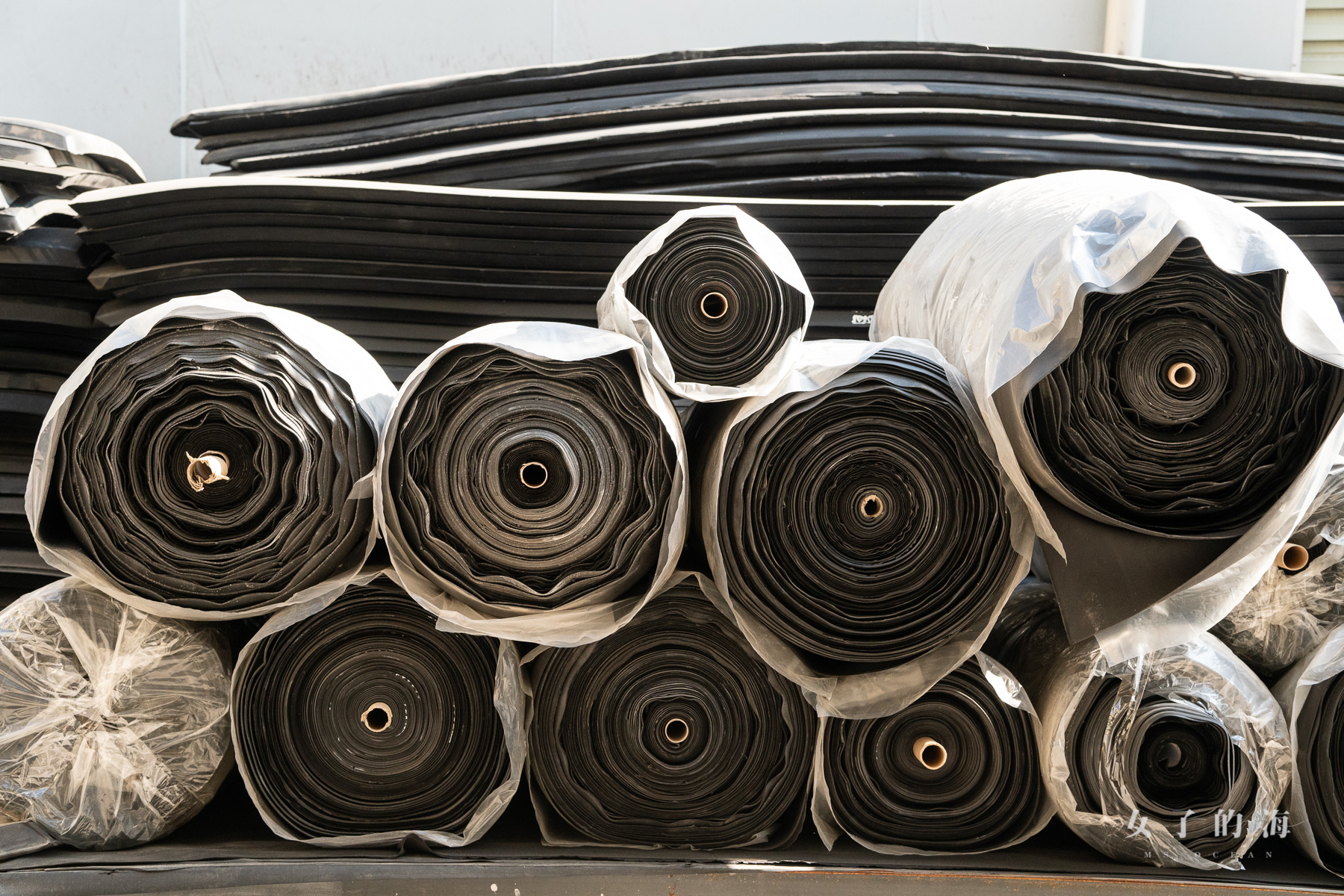
TRUDIVE Factory
- Release Date:
The Production of Wetsuit from The Beginning
Ever wondered how a piece of wetsuit comes to life? While we know that the fabric of wetsuit is made of chloroprene rubber (CR, Neoprene), you might be surprised to learn that its initial form is foam sponge sheets resembling mattresses. By visiting TRUDIVE’s wetsuit production factory, we witnessed the entire process from chloroprene rubber foam sponge fabric to the creation of complete wetsuit. Reading this article will provide you with insights into the production of wetsuit, and combined with other articles about wetsuit, you can become a little expert in the field.
Chloroprene Rubber Foam Sponge
The chloroprene rubber foam sponge, produced from molds, initially appears as sheets resembling mattresses. The surface is smooth, but when cut open, it reveals a flesh filled with numerous cells. There are many factories producing chloroprene rubber, including Japan’s Yamamoto, NJN, Korea’s Jako, and Taiwan’s Sheico and Nam-Liong. Each factory typically produces various models of chloroprene rubber, with different elasticity, density, strength, and varying costs, suitable for different purposes.
Although these chloroprene rubber foam sponges may seem thick, a simple touch with the fingers reveals the elasticity differences between different models. The comfort of wearing a free diving wetsuit is heavily dependent on the fabric’s elasticity. Each manufacturer has several models suitable for use in cold-weather clothing, such as Yamamoto’s #39, #40, #45, Jako’s MS, MSL, MRL, and Nam-Liong’s SS-1, 3D, W8. Generally, models with better elasticity come at a higher price.
The commonly heard thicknesses like 2mm, 3mm, 5mm, etc., are obtained by cutting slices from these chloroprene rubber foam sponges using a cutting machine. Thicknesses can range from 0.5mm to 10mm. However, slicing usually comes with tolerances, and most manufacturers do not specify the margin of error. Therefore, sometimes a wetsuit advertised as 3mm may vary slightly in actual thickness due to the tolerance during slicing.
Although the chloroprene rubber foam sponge raw material produced from molds has a smooth surface on top and bottom, it actually contains many small cells throughout the middle layer. The top and bottom layers are called the surface or smooth surface, and the layer cut out from the middle is called the flesh, or what we commonly refer to as open cell. While the elasticity of the flesh is the best, its strength is lower, making it prone to rupture. The surface, on the other hand, has slightly better strength but is also a bit harder. Generally, wetsuits with an outer smooth surface are made using the surface of the chloroprene rubber foam sponge raw material. Since only two pieces of surface can be cut from a single sheet of chloroprene rubber foam sponge, making wetsuits from the surface is more expensive as the raw material is relatively scarce. This explains why wetsuits with an outer smooth surface are more expensive than those with an outer fabric surface.
The cut chloroprene rubber slices are not directly used to make wetsuits; they typically undergo additional processes like fabric bonding or coating. The stretchability of the bonded fabric is crucial because, while attaching nylon fabric can enhance the durability of wetsuits, it simultaneously restricts the original stretchiness and elasticity of chloroprene rubber, reducing water density and insulation. If both sides of the chloroprene rubber slices are bonded with fabric, it becomes a double fabric surface material. If one side is bonded with nylon fabric, it could be either an outer smooth surface/inner fabric or outer fabric/inner open-cell material.
The original color of chloroprene rubber is mostly black, and if other colors are desired, a coating must be applied. For instance, Yamamoto’s SCS technology or the titanium coating technology used by TRUDIVE. By adding titanium powder in various colors, the coating on the surface of chloroprene rubber not only increases strength but also creates smooth surface fabrics in different colors.
